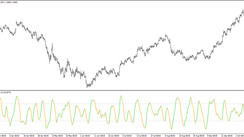Introduction: Stepping into Flexible Trading
In the unpredictable landscape of financial markets where fortunes can pivot in mere moments, both novice and experienced traders alike are steering towards agile and flexible trading strategies. Beyond the traditionally utilized fixed stops, a strategy that has garnered favor is a more nuanced approach that hinges on the implementation of mental and soft stops. This guide serves as a deep dive into the nuances and intricacies of these emerging strategies, spotlighting how they can serve as powerful tools in a trader’s repertoire, nurturing a discipline that remains adaptable amidst the fluid dynamics of trading environments.
Understanding Mental and Soft Stops
To forge a trading pathway that is both disciplined and responsive to market volatilities, it becomes imperative to delve into the deeper realms of mental and soft stops. Below, we break down these concepts, each serving as a vital cog in the wheel of flexible trading strategies:
Mental Stops
A mental stop operates in the realm of a trader’s cognitive strategy, where they set an internal benchmark or trigger point to exit a trade, sans any formal stop order lodged in their trading setup. This strategy not only empowers traders with a personal touch but opens avenues to curb losses or spearhead profitable strides through proactive market responses grounded in detailed technical analysis. Here, traders trust their analytical prowess and judgment over automated stop orders, cultivating a rich strategy rooted in mindfulness and agility.
Soft Stops
Soft stops stand a class apart, defining a flexible range instead of a rigid exit point. It accords traders the space to strategize exit points within a spectrum of values that echo the market’s pulse at any given moment. The freedom vested through soft stops allows traders to weave a strategy that remains untethered to static numbers, fostering a dynamic approach that is both intuitive and grounded in real-time market analyses.
Taking a hypothetical route, envisage a trader overseeing a stock acquired at $25.15, with a soft mental note to potentially exit if it hovers around $24.90. The strategy here unfurls with a watchful eye on the fluctuating market dynamics, permitting a fluid exit strategy that resonates with the market’s real-time movements, thereby engaging a soft stop strategy to its fullest potential.
Who Can Benefit from Mental and Soft Stops?
Delineating the varied spectra of traders who can harvest the rich dividends of mental and soft stops, we find that this strategy finds takers across a broad swath, from day traders maneuvering short-term markets to long-term players grounded in fundamental analyses:
Short-Term Traders
In the domain of short-term trading, including day trading, these strategies emerge as indispensable allies. Traders can deftly navigate the rapidly changing market dynamics, precluding premature exits and making informed decisions that leverage favorable market conditions to their advantage.
Fundamental Traders
On the flip side, fundamental traders, who base their trading strategies on a long-term analysis of market fundamentals, find a resilient ally in soft stops. This approach grants them a more relaxed yet informed perspective, allowing them to hold steadfast to a position as long as the fundamental indicators signal a profitable trajectory, and steering clear only when a decisive shift in market dynamics warrants an exit. This technique nurtures a strategic flexibility that harmonizes with the ebb and flow of market trends.
Pros and Cons of Soft Stops
In the dynamic landscape of trading, leveraging soft stops can be a double-edged sword, offering both notable advantages and some drawbacks. To navigate the markets adeptly, traders must understand the full spectrum of what soft stops bring to the table. Let’s delve deeper into the pros and cons:
Pros of Soft Stops
-
Flexibility in Response to Market Fluctuations: One of the standout benefits of soft stops is their inherent flexibility. Traders have the liberty to define a range within which they can operate, allowing them to respond effectively to rapid market changes without being constrained by rigid boundaries.
-
Avoidance of Premature Stop-outs: Traders often face the frustration of seeing their positions exited prematurely due to momentarily unfavorable market conditions. With soft stops, they can sidestep this issue, maintaining their positions as long as the broader market trends remain favorable.
-
Tailored to Fast-Paced Trading: In the realms of day trading and high-frequency trading, where speed is of the essence, setting fixed stops for every position can be impracticable. Soft stops come to the rescue, affording traders the agility to make swift decisions based on real-time market insights.
Tip: New traders should commence with fixed stops and transition to soft stops once they are well-versed with the market dynamics and are comfortable making rapid decisions.
Cons of Soft Stops
-
Potential for Larger Losses: While soft stops offer flexibility, they also harbor the risk of larger losses. Without a fixed stop to cap the potential loss, traders might find themselves engulfed in a downward spiral, especially in highly volatile markets.
-
Requires Constant Vigilance: Implementing soft stops successfully necessitates constant monitoring of market conditions. Traders need to be on their toes, ready to make informed exit decisions at the right moments, which can be strenuous and time-consuming.
-
Demands High Discipline and Self-Control: Not all traders have the discipline to withhold from impulsive decisions while using soft stops. It calls for a high degree of self-control to stick to the pre-defined exit strategies and not sway under the influence of transient market emotions.
Developing a Balanced Approach
Given the distinctive pros and cons of soft stops, it is pivotal for traders to adopt a balanced approach. It involves leveraging the flexibility of soft stops while also having a backup in the form of a final stop-out price placed with a broker. This mechanism acts as a safety net, safeguarding traders from exorbitant losses in extreme scenarios.
The bottom line is: soft stops, when utilized judiciously, can be a potent tool in a trader’s arsenal, offering a harmonized blend of flexibility and strategy. But traders venturing down this path should be well-prepared to navigate the intricacies with a disciplined and informed approach, ensuring they leverage soft stops to enhance their trading efficacy while mitigating potential pitfalls.
Conclusion: Steering through Trading Terrains with Soft Stops
Embarking on the journey of incorporating soft stops into one’s trading strategy necessitates a comprehensive understanding of market dynamics and a readiness to adapt swiftly to market influences, including major economic events and crucial company revelations that have the power to steer market directions drastically.
Moreover, collaborating proactively with a broker to stipulate a final stop-out price emerges as a vital safety mechanism, envisaging a safety net to circumvent devastating losses. This prescriptive strategy, entailing a clear demarcation of the maximum tolerable loss, safeguards traders from spiraling into untenable financial situations, ensuring a trajectory that is both safe and proficient.
In summation, the journey through the realms of soft stops unfurls a pathway peppered with flexibility and strategic empowerment. However, it unequivocally demands a heightened awareness and a readiness to evolve, urging traders to engage in continual learning to master this art. Thus, traders aspire to a trading experience that is rich in knowledge, marked by safety, and aligned with profitability.





